- Home
- Garden Wildlife
- Insects
- Hymenoptera
- Gall wasps
Above: Adult Gall wasps. Left: Cherry gall wasp Cynips quercusfolii. Centre: Oak apple gall wasp Biorhiza pallida - the wings would normally be over the back. Right: Oak apple gall wasp hatching from the gall.
Species in Britain and Ireland
There are 74 species of cynipid wasps in Britain and Ireland, 50 of which are associated with oak trees where various species produce galls on the roots, buds, foliage, catkins and acorns. Most of them have two generations a year, sexual and asexual, which cause different galls. Sometimes one generation is on native oaks, and the other generation is on Turkey oaks.
One of the first oak galls to be seen in spring is the oak apple, caused by Biorhiza pallida. The pithy, bun-shaped galls, up to 35mm in diameter, often appear before the foliage has expanded. Later in spring, spherical currant galls, 5mm in diameter, caused by the sexual generation of Neuroterus quercusbaccarum develop on the catkins and leaves. During the summer, artichoke galls, which are greatly enlarged buds, caused by Andricus foecundatrix, develop on the stems.
In late summer-autumn several types of gall occur on the foliage. Common spangle galls are slightly domed, yellowish brown, red or purple discs up to 4mm in diameter that can be thickly clustered on the underside of the foliage. This gall is caused by the asexual generation of Neuroterus quercusbaccarum. Other common leaf galls are silk button galls, caused by Neuroterus numismalis, and cherry galls caused by Cynips quercusfolii. The latter are pithy, spherical galls up to 20mm in diameter. Silk button galls are up to 3mm diameter, golden brown and shaped like ring doughnuts.
Several gall wasp species convert developing acorns into galls. Andricus quercuscalicis is the most common and causes knopper galls. These are initially sticky and yellowish green, later pale brown, ridged structures that partly or wholly replace the usual cup and nut arrangement of an acorn. They conceal a small egg-shaped inner gall within which the wasp larvae live. Andricus grossulariae converts the acorns into a mass of blunt spines. These two galls wasps are amongst several European species that have become established in Britain in recent years. Another is Pseudoneuroterus saliens which occurs on Turkey oaks. Its sexual generation causes prominent galls on acorns, which swell slightly, turn red, and usually develop tentacle-like structures. The asexual generation produces cowrie-shell shaped galls on leaves and branches.
Andricus grossulariaeBlunt hedgehog gall on acornGalls on Turkey oak catkins
Andricus kollariMarble gall on stemsBud gall on Turkey oak
Gall wasps associated with roses and some other plants have one generation a year and have only sexual generations, which produce a single form of gall.
When gall wasp larvae have completed their feeding, they pupate inside the galls. Adults of some of the oak gall wasps will emerge in late winter and lay their eggs in the still dormant oak buds. The oak apple causer, Biorhiza pallida, has a two year life-cycle, so that there are effectively two separate populations on a tree, often leading to alternate years of abundance and scarcity.
Role of gall wasps in gardens
Gall wasps appear to have little impact on their host plants, even when they are present in large numbers. In some years, a large proportion of acorns are converted into galls, which may have an adverse effect on animals that feed on acorns during the autumn and winter, such as squirrels, mice, jays and pigeons. There is no danger to the longterm future of oak trees as in some years acorn galls are few in number and numerous seedling oaks are produced.
Other sources of information
Website
Web site of the British Gall Society
Books
Chinery, M. (2011) Britain’s Plant Galls – a photographic guide. WildGuides Ltd
Redfern, M. Shirley, P. Bloxham M. (2023) British Plant Galls. Third Edition, A Field Studies Council AIDGAP key
By Andrew Halstead reviewed by Andrew Salisbury edited by Steve Head
Gall wasps
Plant galls are abnormal growths produced by plants in response to the presence of gall-forming organisms. Many insects and mites, as well as some fungi and bacteria, are capable of causing galls. Those on oak and roses are often caused by gall wasps, also known as cynipid wasps. They are in the Cynipidae family of the Hymenoptera. There are about 1300 species world-wide. They are mostly very small (1-8mm) and some of the galls are much better known (with English names) than the wasps themselves. Unusually none were recorded by Jennifer Owen.
Other insects and invertebrates can produce galls, see Peter Shirley's introduction page here.
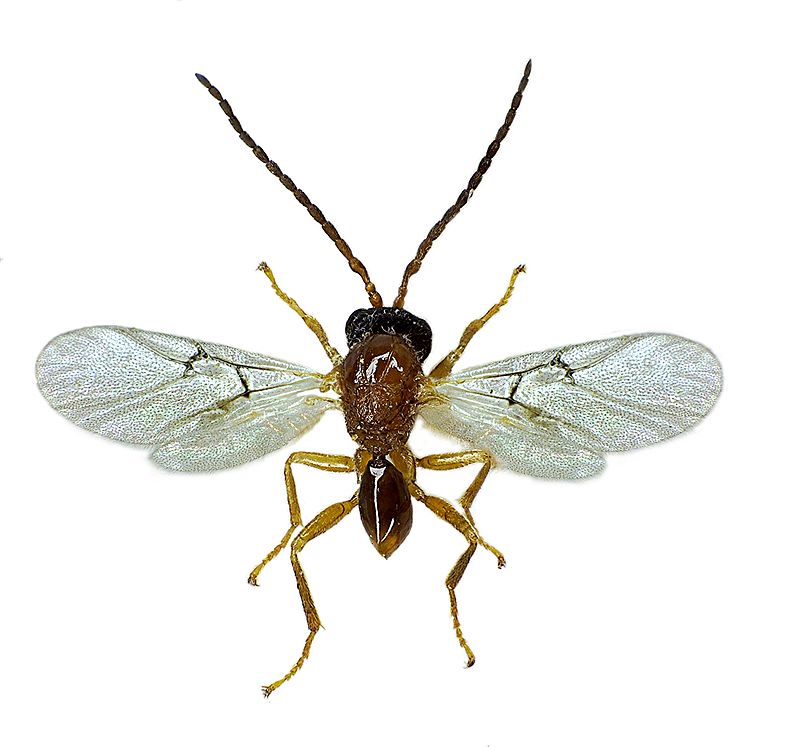
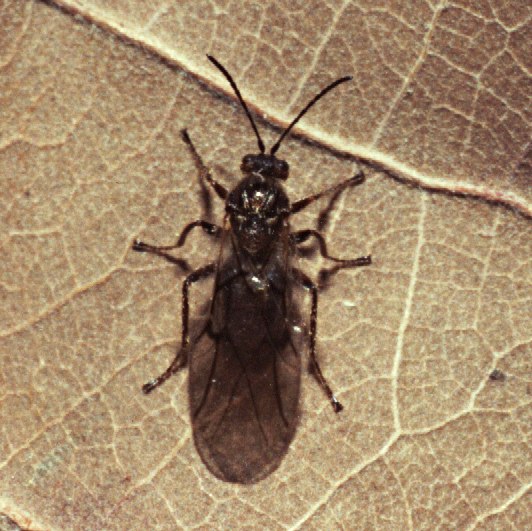
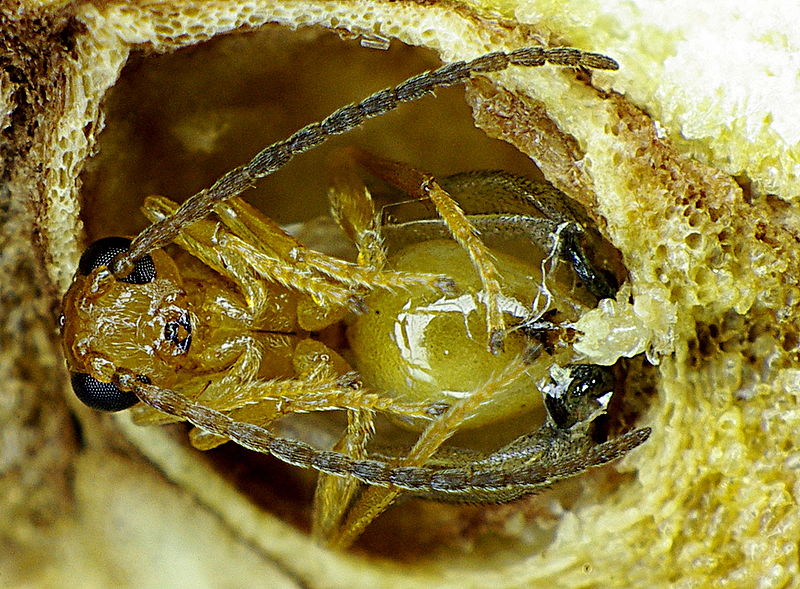
|
Oak gall wasp species
|
Asexual generation (late summer)
|
Sexual generation (spring)
|
|
Biorhiza pallida
|
Root gall (from autumn to the next spring but one)
|
Oak apple gall on buds on stems
|
|
Neuroterus quercusbaccarum
|
Common spangle gall on leaves
|
Currant gall on catkins
|
|
Neuroterus numismalis
|
Silk button gall on leaves
|
Blister leaf gall
|
|
Andricus foecundatrix
|
Artichoke gall on buds on stems
|
Galls on catkins
|
|
Cynips quercusfolii
|
Cherry gall on leaves
|
Bud galls
|
|
Andricus quercuscalicis
|
Knopper gall on acorn
|
Bud gall on Turkey oak
|
|
Andricus grossulariae
|
Blunt hedgehog gall on acorn
|
Galls on Turkey oak catkins
|
|
Andricus kollari
|
Marble gall on stems
|
Bud gall on Turkey oak
|
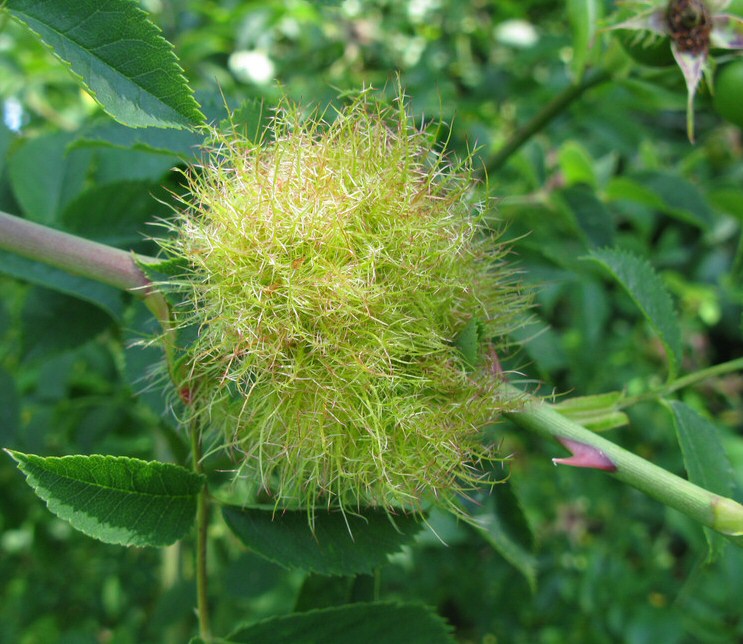
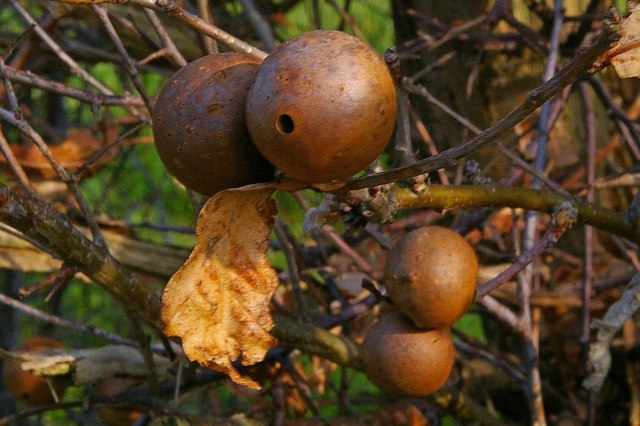
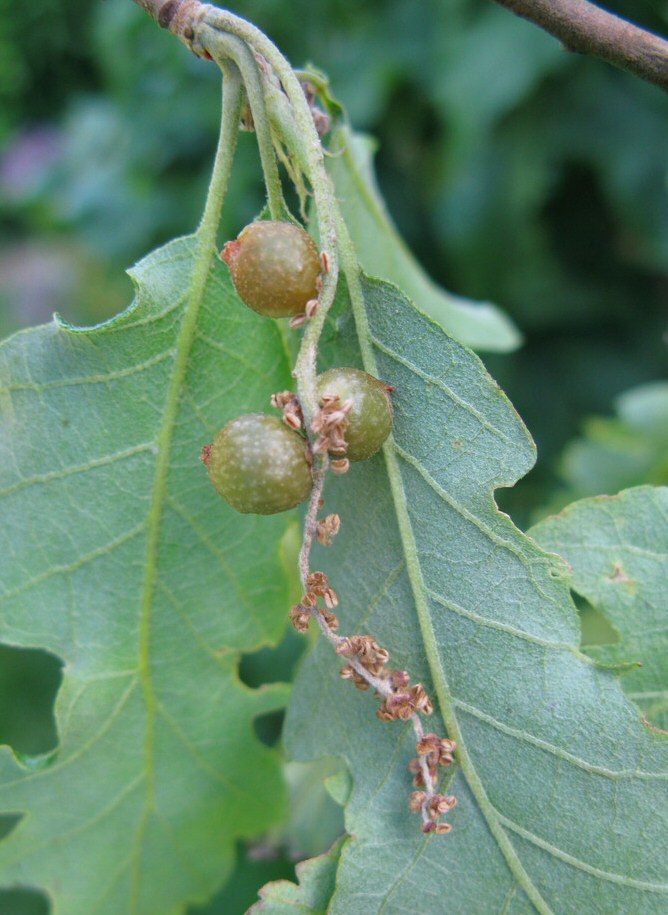
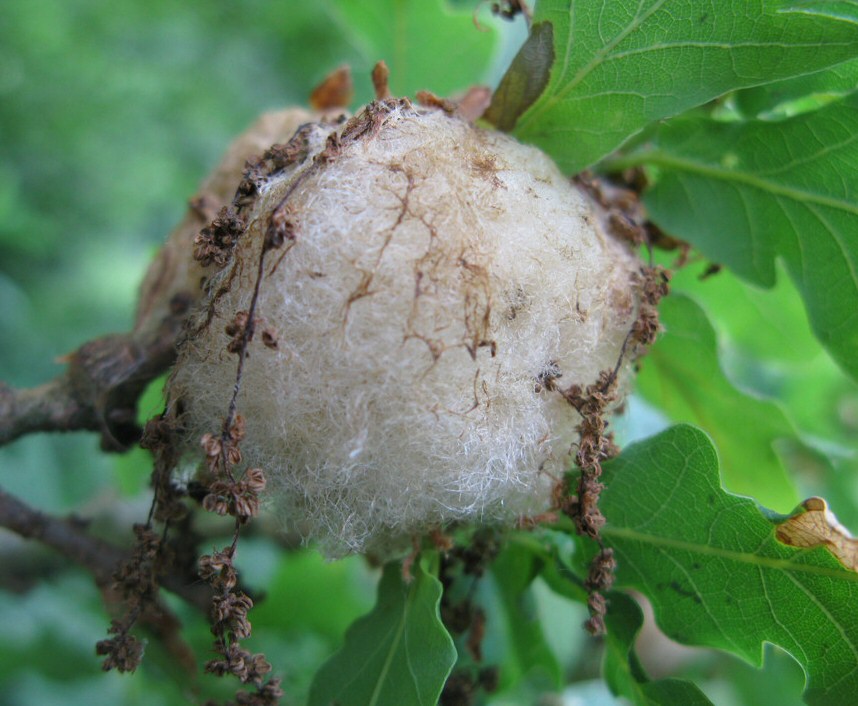
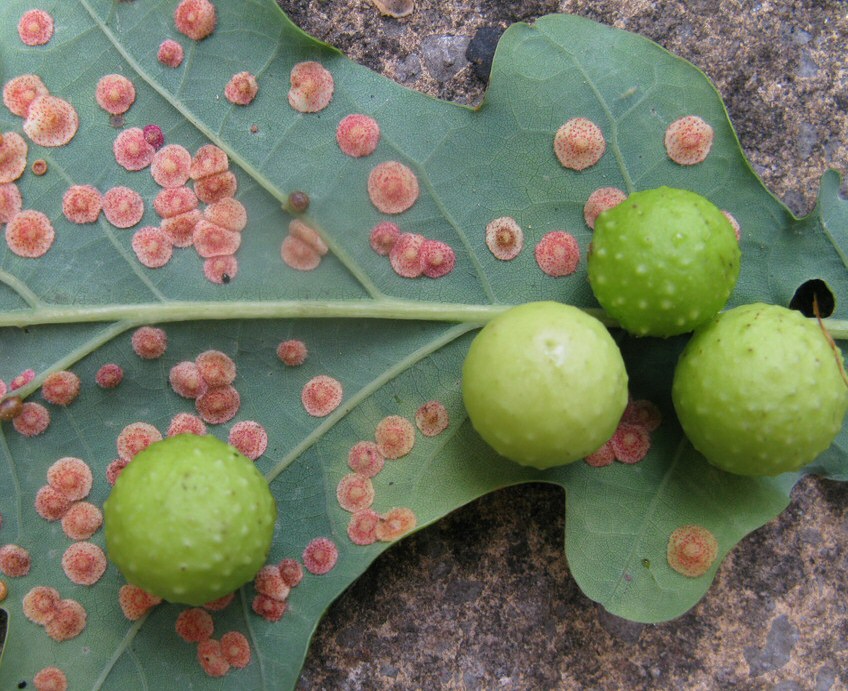
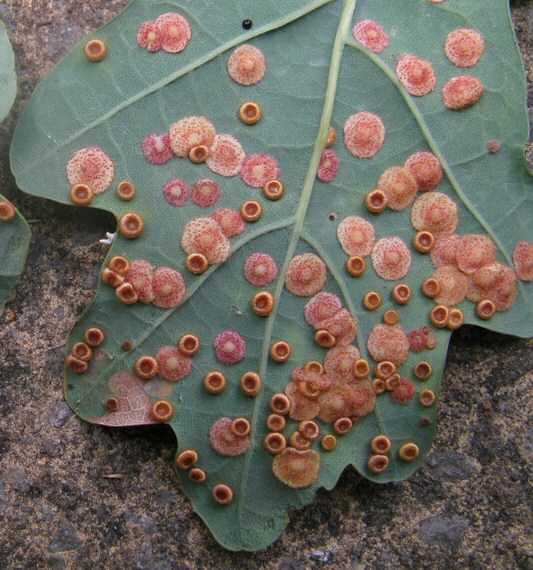
Left: Robin's pincushion or bedeguar gall from Diplolepis rosae on rose
Right: Oak-apple galls from Biorhiza pallida on oak. These are brown old galls, and the exit hole made by the emerging wasp is visible. Young, inhabited galls are green
Left: Common spangle galls (small) from Neuroterus quercusbaccarum and cherry galls from Cynips quercusfolii on oak
Right: Cotton wool gall from Andricus quercusramuli on oak
Left: Catkin galls on Turkey oak
Right: Common spangle galls from Neuroterus quercusbaccarum and silk button galls from Neuroterus numismalis on oak.
|
Oak gall wasp species
|
Asexual generation (late summer)
|
Sexual generation (spring)
|
|
Biorhiza pallida
|
Root gall (from autumn to the next spring but one)
|
Oak apple gall on buds on stems
|
|
Neuroterus quercusbaccarum
|
Common spangle gall on leaves
|
Currant gall on catkins
|
|
Neuroterus numismalis
|
Silk button gall on leaves
|
Blister leaf gall
|
|
Andricus foecundatrix
|
Artichoke gall on buds on stems
|
Galls on catkins
|
|
Cynips quercusfolii
|
Cherry gall on leaves
|
Bud galls
|
|
Andricus quercuscalicis
|
Knopper gall on acorn
|
Bud gall on Turkey oak
|
|
Andricus grossulariae
|
Blunt hedgehog gall on acorn
|
Galls on Turkey oak catkins
|
|
Andricus kollari
|
Marble gall on stems
|
Bud gall on Turkey oak
|
Species in Britain and Ireland
There are 74 species of cynipid wasps in Britain and Ireland, 50 of which are associated with oak trees where various species produce galls on the roots, buds, foliage, catkins and acorns. Most of them have two generations a year, sexual and asexual, which cause different galls. Sometimes one generation is on native oaks, and the other generation is on Turkey oaks.
One of the first oak galls to be seen in spring is the oak apple, caused by Biorhiza pallida. The pithy, bun-shaped galls, up to 35mm in diameter, often appear before the foliage has expanded. Later in spring, spherical currant galls, 5mm in diameter, caused by the sexual generation of Neuroterus quercusbaccarum develop on the catkins and leaves. During the summer, artichoke galls, which are greatly enlarged buds, caused by Andricus foecundatrix, develop on the stems.
In late summer-autumn several types of gall occur on the foliage. Common spangle galls are slightly domed, yellowish brown, red or purple discs up to 4mm in diameter that can be thickly clustered on the underside of the foliage. This gall is caused by the asexual generation of Neuroterus quercusbaccarum. Other common leaf galls are silk button galls, caused by Neuroterus numismalis, and cherry galls caused by Cynips quercusfolii. The latter are pithy, spherical galls up to 20mm in diameter. Silk button galls are up to 3mm diameter, golden brown and shaped like ring doughnuts.
Several gall wasp species convert developing acorns into galls. Andricus quercuscalicis is the most common and causes knopper galls. These are initially sticky and yellowish green, turning reddish, later pale brown, ridged structures that partly or wholly replace the usual cup and nut arrangement of an acorn. They conceal a small egg-shaped inner gall within which the wasp larvae live. Andricus grossulariae converts the acorns into a mass of blunt spines. These two galls wasps are amongst several European species that have become established in Britain in recent years. Another is Pseudoneuroterus saliens which occurs on Turkey oaks. Its sexual generation causes prominent galls on acorns, which swell slightly, turn red, and usually develop tentacle-like structures. The asexual generation produces cowrie-shell shaped galls on leaves and branches.
Gall wasps associated with roses and some other plants have one generation a year and have only sexual generations, which produce a single form of gall.
When gall wasp larvae have completed their feeding, they pupate inside the galls. Adults of some of the oak gall wasps will emerge in late winter and lay their eggs in the still dormant oak buds. The oak apple causer, Biorhiza pallida, has a two year life-cycle, so that there are effectively two separate populations on a tree, often leading to alternate years of abundance and scarcity.
Role of gall wasps in gardens
Gall wasps appear to have little impact on their host plants, even when they are present in large numbers. In some years, a large proportion of acorns are converted into galls, which may have an adverse effect on animals that feed on acorns during the autumn and winter, such as squirrels, mice, jays and pigeons. There is no danger to the longterm future of oak trees as in some years acorn galls are few in number and numerous seedling oaks are produced.
Other sources of information
Website
Web site of the British Gall Society
Books
Chinery, M. (2011) Britain’s Plant Galls – a photographic guide. WildGuides Ltd
Redfern, M. Shirley, P. Bloxham M. (2023) British Plant Galls. Third Edition, A Field Studies Council AIDGAP key
By Andrew Halstead reviewed by Andrew Salisbury edited by Steve Head
Gall wasps
Plant galls are abnormal growths produced by plants in response to the presence of gall-forming organisms. Many insects and mites, as well as some fungi and bacteria, are capable of causing galls. Those on oak and roses are often caused by gall wasps, also known as cynipid wasps. They are in the Cynipidae family of the Hymenoptera. There are about 1300 species world-wide. They are mostly very small (1-8mm) and some of the galls are much better known (with English names) than the wasps themselves. Unusually none were recorded by Jennifer Owen.



Adult Gall wasps. Top left: Cherry gall wasp Cynips quercusfolii. Right: Oak apple gall wasp Biorhiza pallida - the wings would normally be over the back. Left: Oak apple gall wasp hatching from the gall.


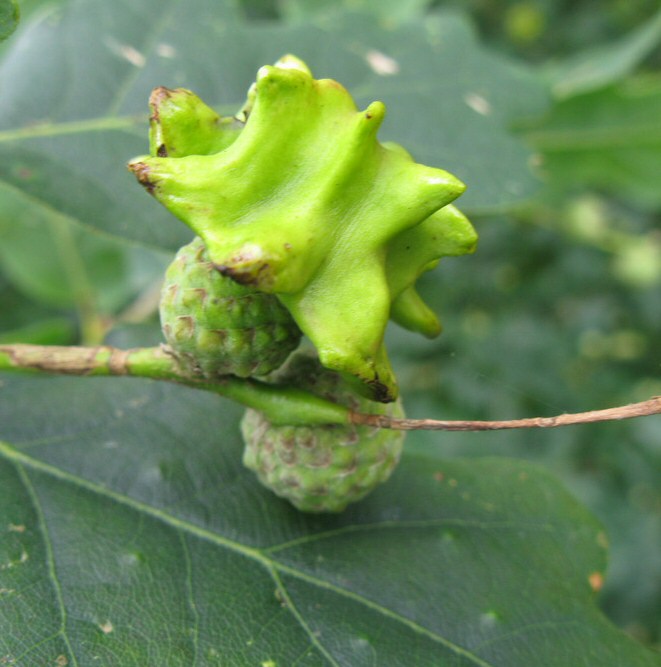

Above left: Robin's pincushion or bedeguar gall from Diplolepis rosae on rose
Right: Oak-apple galls from Biorhiza pallida on oak. These are brown old galls, and the exit hole made by the emerging wasp is visible. Young, inhabited galls are green
Above: acorn galls. Left: Spiny acorn gall from Andricus grossulariae. Right: Knopper gall from Andricus quercuscalicis


Above left: Common spangle galls (small) from Neuroterus quercusbaccarum and cherry galls from Cynips quercusfolii on oak. Right: Cotton wool gall from Andricus quercusramuli on oak
Above left: Catkin galls on Turkey oak. Right: Common spangle galls from Neuroterus quercusbaccarum and silk button galls from Neuroterus numismalis on oak.
Visible throughout the year are marble galls, caused by Andricus kollari, especially on small sapling oaks. The hard woody spherical galls are up to 20mm in diameter and are bud galls on the stems. They are initially yellowish green, turning reddish, but later turn brown.
Roses, especially wild roses in hedgerows and sucker growth on cultivated roses, are affected by several gall wasps. Diplolepis rosae causes growths known as bedeguar galls or Robin’s pincushion on the stems. These galls have a hard centre but in late summer are covered in moss-like yellowish green or red modified leaves. Large bedeguar galls can be about 50mm in diameter. Diplolepis nervosa causes spherical green or reddish galls on the foliage. These pea galls are up to 9mm in diameter and can be smooth or with several projecting spines.
Biology
Gall wasps insert their eggs into the part of a plant where the gall will develop. The plant grows the gall in response to chemicals that are secreted by the larval stage. The inside of the gall has a layer of nutritive cells on which the larva feeds. Most galls caused by gall wasps contain a single larva but some, such as oak apples and bedeguar galls on rose, will contain numerous larvae.
Some of the larger galls, such as marble galls and oak apples, may also contain larvae of other cynipid wasps. These are effectively ‘lodgers’ that live and feed in the gall but do not cause it to develop. Such insects are known as inquilines.
Life cycle
Many oak gall wasps have complex life cycles with alternating sexual and asexual generations that cause different types of gall on different parts of the plant, and sometimes on different species of oak tree. The sexual generation has both male and female adults, the asexual generation has females only through parthenogenesis. The oak gall wasps in the table below develop on native oaks, Quercus robur and Q.petraea, or, where stated, have a generation on Turkey oak, Q. cerris.
Visible throughout the year are marble galls, caused by Andricus kollari, especially on small sapling oaks. The hard woody spherical galls are up to 20mm in diameter and are bud galls on the stems. They are initially yellowish green but later turn brown.
Roses, especially wild roses in hedgerows and sucker growth on cultivated roses, are affected by several gall wasps. Diplolepis rosae causes growths known as bedeguar galls or Robin’s pincushion on the stems. These galls have a hard centre but in late summer are covered in moss-like yellowish green or red modified leaves. Large bedeguar galls can be about 50mm in diameter. Diplolepis nervosa causes spherical green or reddish galls on the foliage. These pea galls are up to 9mm in diameter and can be smooth or with several projecting spines.
Biology
Gall wasps insert their eggs into the part of a plant where the gall will develop. The plant grows the gall in response to chemicals that are secreted by the larval stage. The inside of the gall has a layer of nutritive cells on which the larva feeds. Most galls caused by gall wasps contain a single larva but some, such as oak apples and bedeguar galls on rose, will contain numerous larvae.
Some of the larger galls, such as marble galls and oak apples, may also contain larvae of other cynipid wasps. These are effectively ‘lodgers’ that live and feed in the gall but do not cause it to develop. Such insects are known as inquilines.
Life cycle
Many oak gall wasps have complex life cycles with alternating sexual and asexual generations that cause different types of gall on different parts of the plant, and sometimes on different species of oak tree. The sexual generation has both male and female adults, the asexual generation has females only through parthenogenesis. The oak gall wasps in the table below develop on native oaks, Quercus robur and Q.petraea, or, where stated, have a generation on Turkey oak, Q. cerris.
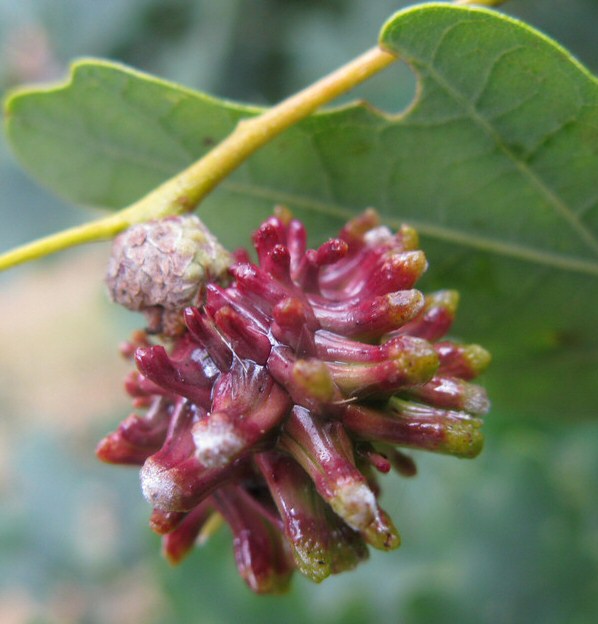

Acorn galls
Left: Spiny acorn gall from Andricus grossulariae
Right: Knopper gall from Andricus quercuscalicis












